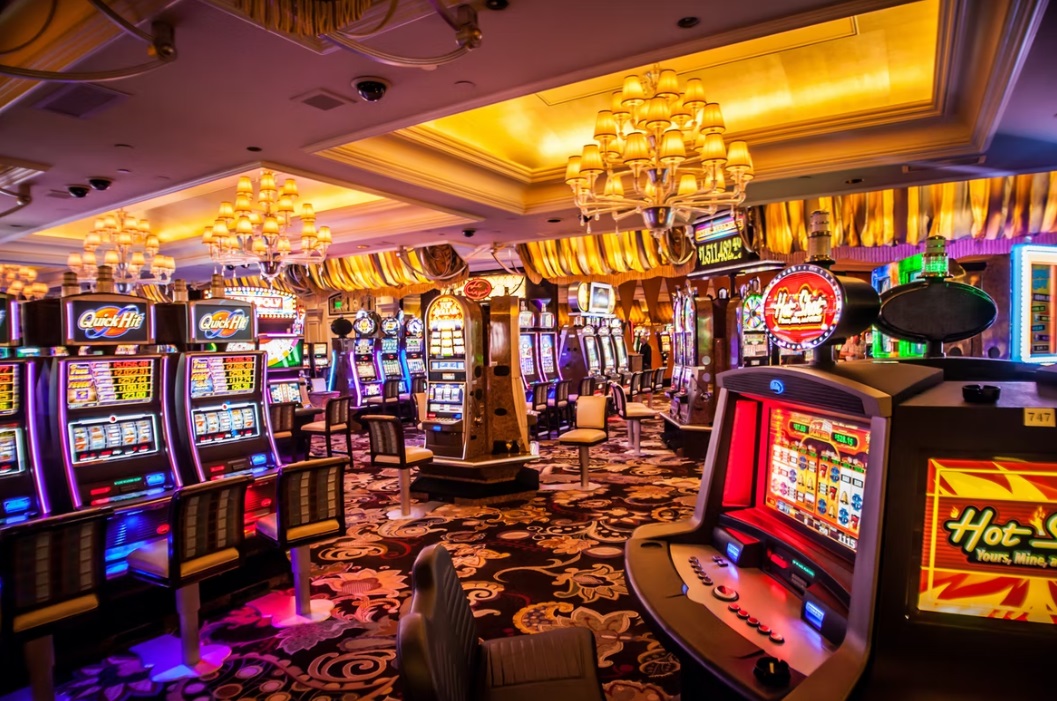Latest Updates
Featured Posts
Get in Touch
123 Innovation Street
Tech District, CA 94105
[email protected]
+1 (234) 567-890
A Cultural Effect of Gambling Machines Around the Globe
Worldwide, the charm of slot machines has captivated millions, crossing cultural boundaries and attracting diverse audiences. From the bustling casinos of Las Vegas to the colorful gaming halls of Macau's gaming centers, these fascinating machines have become symbols of thrill and expectation. The rotating reels and vivid visuals draw players into immersive experiences, creating a singular blend of fortune and entertainment that connects with people from all walks of life.
As these games progress, their influence extends beyond just wagering; they influence popular culture, spark art, and transform how people connect. Whether it's through films depicting of life in casinos or the rise of online slots that bring the excitement of gambling to the comfort of home, the relevance of casino slots games continues to increase. Exploring this situation reveals more than the rules of play, but also the deeper connections they create within communities and their role in the broader tapestry of entertainment options across the world.

History of Casino Slots
The beginnings of gambling slot machines can be traced to the late nineteenth century with the invention of the initial conventional slot machine. Ga179 In the year 1887, Charles Fey, a mechanic from California, created the first mechanical slot machine, which had three spinning reels and a basic design with icons such as horseshoes and playing cards. This machine gave players a opportunity to win coins, laying the groundwork for what would become a worldwide gaming trend.
As the acceptance of slot machines expanded, various advancements surfaced throughout the beginning 20th century. By the 1900s, numerous companies began making their models, enhancing the machines with new features and more sophisticated functions. These early devices became a fixture in bars, saloons, and eventually started to make their way into casinos. By the 1960s, the traditional slot machine was more improved with the advent of electronic parts, leading to more diverse gameplay and higher player engagement.
The 1980s marked a crucial shift when video visual technology was integrated into casino slots. This development allowed for more intricate graphics, audio, and storylines, attracting a broader audience. The combination of impressive visuals and engaging gameplay changed casino slots into a major draw in gaming venues around the globe. As a result, slots developed from simple machines into sophisticated entertainment devices, reflecting changing cultural tastes and tech advancements.
Cultural Differences of Slot Machines
Gaming slot games have transformed in order to represent the cultures along with customs of different regions wherever they are utilized. For instance, in Japanese culture, for instance, pachinko devices merge aspects between pinball and classic slot games, resulting in a unique gaming experience which is intensely entrenched within Japanese entertainment scene. Such models often include well-known anime icons along with concepts, demonstrating the intersection of gaming and mass culture in Japan.
In contrast, in the US, gambling machines are designed based on iconic films, famous people, and symbolic symbols from U.S. tradition. Such a trend demonstrates a tendency for exalt as well as commercialize popular culture, rendering the gambling experience understandable for players. These vibrant visuals and effects aim to generate enthusiasm and entice gamers into the slot atmosphere, highlighting U.S. ingenuity in entertainment as well as technological advancements.
In European regions likewise have their own specific strategies toward slot games. As an example, in Britain, for instance, old-school fruit games located inside bars and arcades reflect local preferences in favor of traditional gaming designs. These models typically highlight simple designs while also clear-cut mechanics, that speak strongly with gamers that appreciate a nostalgic gaming experience. This local difference illustrates the manner in which community factors affect the development while also appeal of slot slot machines throughout various areas of the world.
The Future of Casino Slots
As technology continues to evolve, the future of casino slots appears bright and dynamic. Advancements in gaming technology, such as virtual reality and augmented reality, are likely to redefine how players interact with slots. Imagine stepping into a virtual casino where players can engage with their environment more immersively, making the act of spinning the reels more exciting and enthralling than before. This shift could also draw in a younger demographic, ushering in a new era of casino entertainment.
Moreover, the integration of AI and large-scale data analytics will enhance customization in casino slots. Players can look forward to games tailored to their preferences, as AI assesses their patterns and actions. This customization not only makes the gaming play more fun but also encourages loyalty, as casinos work hard to accommodate individual player needs. Upcoming slot games will likely include more engaging narratives and rich content, pushing the limits of traditional gameplay.
Finally, the rise of mobile gaming will continue to transform the landscape of casino slots around the world. As more players opt for smartphones and tablets for entertainment, casino operators will focus on optimizing their games for mobile platforms. This convenience allows for more easy play, with players able to enjoy their preferred slots anytime and any place. As the global gaming market expands, the evolution of casino slots will play a vital role in drawing new players and maintaining the thrill of existing fans.
